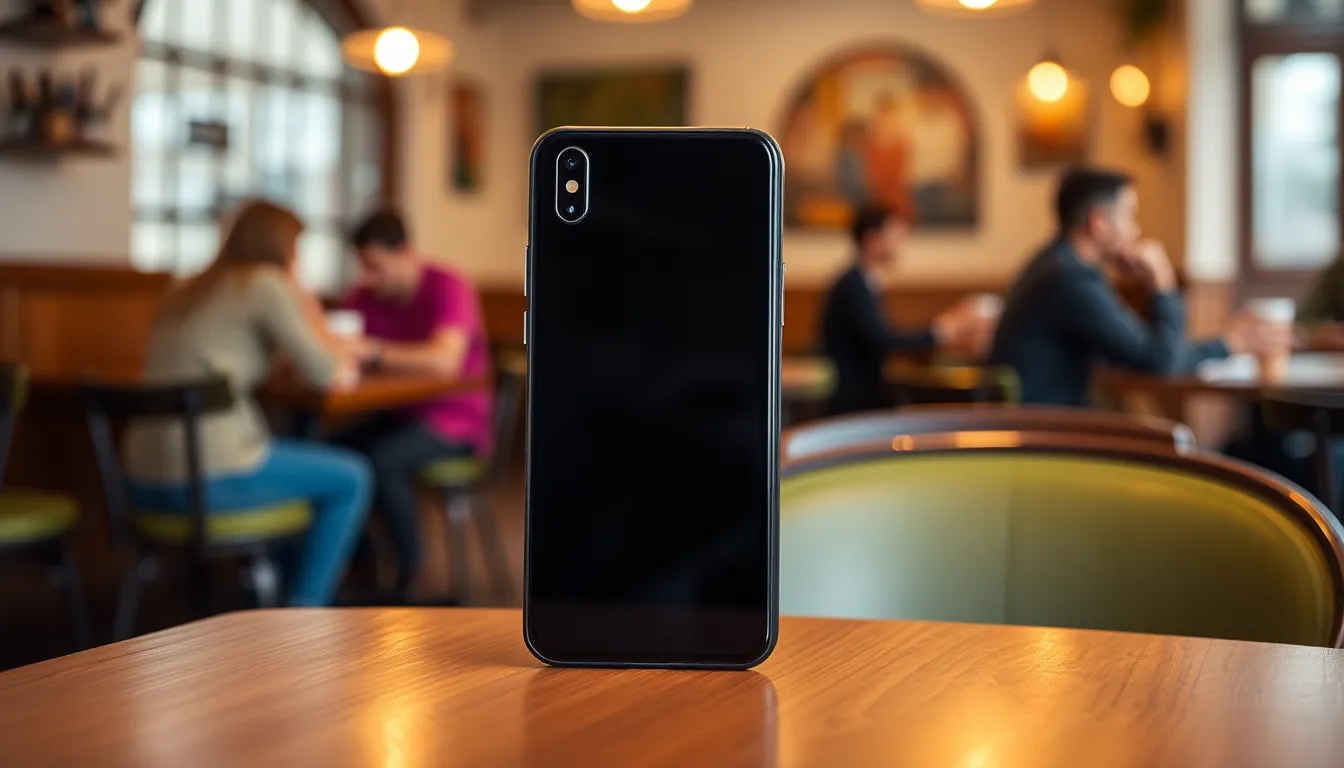In a world where mobile devices are practically an extension of our hands, choosing the right one can feel like dating. You swipe left on the clunky models and swipe right on sleek designs, but how do you know if your match is the one? Evaluating mobile devices isn’t just about the latest specs or flashy ads; it’s about finding that perfect blend of performance, usability, and style that fits seamlessly into daily life.
Table of Contents
ToggleOverview of Mobile Devices Evaluation
Evaluating mobile devices involves considering multiple factors that contribute to overall user experience. Performance remains a top priority, as users expect fast and responsive devices capable of running various applications seamlessly. Usability also plays a crucial role in the selection process. Intuitive interfaces and accessible features enhance daily interactions, making devices more enjoyable to use.
Style might be secondary, but it influences many purchase decisions. Aesthetically pleasing designs resonate with users and create a sense of personal connection. Users often appreciate devices that look good in addition to functioning well.
Battery life represents another critical aspect of mobile device evaluation. Research indicates that 20 to 30 percent of users list battery longevity as a primary concern. Users appreciate devices that support extended periods without charging, as constant connectivity has become essential.
Camera quality remains increasingly important, particularly for social media users and content creators. They expect high-resolution cameras with advanced features like image stabilization and low-light capabilities. Many mobile devices now offer multiple lenses, enhancing versatility for various shooting conditions.
Price impacts decision-making significantly. Most consumers operate within specific budgets, looking for devices that offer the best value for their money. Specifications should align closely with cost, ensuring users don’t sacrifice quality for cheaper alternatives.
When evaluating mobile devices, shoppers often seek reliable reviews and comparisons. Reliable sources provide valuable insights that can influence purchasing decisions. Users benefit from understanding how devices perform in real-life scenarios rather than relying solely on marketing claims. By addressing these factors, consumers can make informed choices that cater to their unique needs and preferences.
Key Criteria for Evaluation


Evaluating mobile devices requires attention to various criteria that significantly affect user experience. Each factor plays a vital role in decision-making for potential buyers.
Performance Metrics
Fast processors enable smooth multitasking and quick app launches. Users expect devices to handle demanding applications without lag. Benchmark scores provide insights into overall performance capabilities. High RAM counts often enhance device speed, allowing for seamless transitions between tasks. Additionally, storage options should accommodate users’ needs, ensuring sufficient space for apps and data.
Design and Usability
An intuitive interface enhances daily interactions, making navigation effortless. Aesthetic appeal attracts users, with sleek designs creating a positive first impression. Ergonomics matter; devices must feel comfortable in hand. Touchscreen responsiveness plays a crucial role, as users prefer displays that react promptly to inputs. Larger screen sizes often improve viewing experiences, especially for media consumption.
Battery Life
Longevity is a leading concern for many users, with over 60% prioritizing extended battery life. Devices that last throughout the day without constant recharging rank higher in evaluation. Quick charging features add to user convenience, allowing for minimal interruptions. It’s essential to consider how battery capacity impacts daily usage, particularly for power users. Assessing battery health through reviews can provide further insights.
Camera Quality
High-resolution cameras are crucial for social media enthusiasts and content creators. Advanced features like optical image stabilization and low-light performance enhance photo quality. Users frequently seek multiple lenses for versatility, allowing for different photography styles. Video recording capabilities, including 4K options, contribute to a device’s overall appeal. Reviews highlighting camera performance can guide users in making informed choices.
Popular Mobile Devices in 2023
Numerous mobile devices dominate the market in 2023, each designed to meet specific user needs and preferences.
Flagship Models
Top-tier smartphones include the Apple iPhone 14 Pro, Samsung Galaxy S23 Ultra, and Google Pixel 7 Pro. Each flagship device showcases high-performance processors and substantial RAM, offering smooth multitasking experiences. iPhone 14 Pro boasts a powerful A16 Bionic chip, ensuring rapid app launches and seamless operation. Galaxy S23 Ultra features an impressive camera system with multiple lenses, catering to photography enthusiasts. Pixel 7 Pro, recognized for its exceptional computational photography, appeals to content creators seeking high-resolution images. Flagship models generally excel in battery life, with many maintaining performance beyond a full day, reflecting the trend where over 60% of users prioritize longevity.
Budget-Friendly Options
Affordable smartphones include the Samsung Galaxy A54, Motorola Moto G Power, and OnePlus Nord N20. Each option delivers impressive performance without straining budgets. Galaxy A54 stands out with its excellent battery life and solid camera features. Moto G Power excels in longevity, often lasting two days without charging. OnePlus Nord N20 provides a sleek design and decent performance, making it suitable for everyday users. Budget devices maintain usability through intuitive interfaces, which enhances user satisfaction. Affordability remains a crucial factor, helping users find devices that balance features and price effectively.
Methodology for Evaluation
Evaluating mobile devices requires a comprehensive approach that considers various data points and user experiences. The methodology often involves user surveys, benchmark tests, and expert reviews, ensuring a multidimensional assessment.
User Surveys
User surveys serve as a valuable tool for gathering real-world insights. They provide direct feedback from consumers about their experiences with different devices. More than 60% of respondents prioritize battery life, indicating its importance in daily usage. Additionally, surveys often highlight preferences for camera quality and usability, reinforcing the significance of intuitive interfaces. Collecting this data enables researchers to identify trends and common pain points faced by users, guiding potential buyers toward informed decisions.
Benchmark Tests
Benchmark tests play a crucial role in evaluating device performance. These tests assess processing power, graphics capabilities, and multitasking efficiency. Metrics gathered from benchmark scores help consumers compare devices objectively. For instance, flagship models consistently demonstrate superior performance metrics, often achieving higher scores in tasks like app loading and gaming. Users seeking high efficiency can rely on these scores to guide their choices, prioritizing devices that deliver timely and responsive experiences.
Expert Reviews
Expert reviews offer in-depth analyses of mobile devices based on extensive testing. Tech experts evaluate performance, usability, and features, providing detailed insights that consumers can trust. Many publications focus on criteria such as camera quality, battery longevity, and build quality, aligning with consumer priorities. Reviews often include comparisons to similar devices, helping potential buyers gauge which model meets their specific needs. By consulting these expert opinions, individuals can gain a clearer understanding of device capabilities, ensuring their choices reflect informed evaluations.




